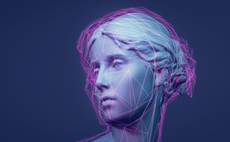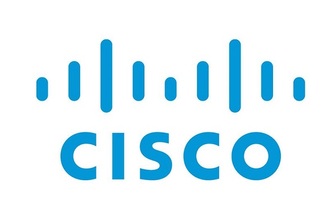Whichever government first produces a working device that can crack public key encryption will be 'master of the world'
24/07/2018 Google joins the blockchain party
Google Cloud is nailing its colours to the blockchain mast, partnering with a couple of startups, Digital Asset and BlockApps. More details will be revealed today at the Google Cloud Next 18 event in San Francisco in a session covering Google Cloud's approach to distributed ledger technology (DLT) partnerships.
"Customers can now explore ways they might use distributed ledger technology (DLT) frameworks on GCP [Google Cloud Platform] with launch partners including Digital Asset and BlockApps, and try open-source integrations for Hyperledger Fabric and Ethereum later this year in our GCP Marketplace," Google says in a perfunctory paragraph in its cloud partnerships blog.
Google has been slower off the mark than rival cloud vendors. Microsoft Azure, Amazon AWS and IBM have had blockchain partnerships for a couple of years now and are beginning to boast of real-world projects.
Google doesn't go into a lot of detail in its blog, presumably not wanting to spoil the fun for paying delegates, but its chosen partners are more effusive. "Google's entrance into the blockchain space is a landmark event for the growing blockchain ecosystem and cements the continued investment in blockchain solutions for Enterprises," says BlockApps on its website.
"As GCP adoption grows, the developer-friendly BlockApps STRATO platform enables more enterprises the ability to test and implement blockchain application solutions across any business sector,"
STRATO is a blockchain-as-a-service platform which the company claims lowers the barriers to creating decentralised applications (dApps) as it offers a RESTful API to communicate with the blockchain backend. The company is based in New York.
Digital Asset is also headquartered in New York. It provides a distributed ledger platform and smart contract modelling language called DAML.
"In collaboration with Google Cloud, Digital Asset has expanded its developer program to include the DAML Platform-as-a-Service (PaaS) on Google Cloud Platform. The DAML PaaS is a fully-managed solution that developers can use to test and deploy DLT applications, accessible through Google Cloud's Orbitera application marketplace technologies. Combined with the DAML SDK, developers now have an end-to-end toolkit to build and deploy sophisticated distributed applications," the company says in a press release.
17/07/2018 Consortium-based efforts to rationalise supply chains are perhaps the main real-world use cases for blockchains to emerge so far, outside of the world of cryptocurrencies. Another such venture was unveiled this week when consultancy Accenture and defence firm Thales announced a blockchain-based system to secure and improve the efficiency of aerospace and defence (A&D) supply chains at the Farnborough Air Show on Monday.
The system, which is based on the Linux Foundation's Hyperledger blockchain framework, also uses Thales's "physically unclonable function (PUF) solution for silicon chips and Chronicled's tamper-proof cryptoseals" in order to keep track of parts and materials used in aircraft manufacture, where counterfeit components have been a cause for concern, according to Accenture's website.
"Identifying counterfeit and grey-market goods in the A&D supply chain can be challenging," said Gareth Williams, vice president for secure communications and information systems at Thales UK.
"Using blockchain in combination with cryptoseals and physically unclonable functions allows you to build a trusted history behind parts. This demonstration builds on the strong relationship Accenture and Thales have created developing innovative digital solutions for a variety of industries."
Like similar systems being developed by the likes of FedEx and Maersk, the system is designed to provide transparency to all participants in the supply chain, as well as creating an immutable record of all transactions in the supply chain.
"The aerospace and defence industry has one of the world's most vast and complex supply chains. Blockchain technology offers a new, elegant and secure way for the industry to track and trace myriad components while deterring counterfeiting and improving maintenance capabilities," said John Schmidt, the head of Accenture's A&D unit.
"Used in combination with technologies like digital twins and digital threads, blockchain could ultimately be a game-changing innovation for this sector."
03/07/2018 A consortium of European banks has announced the first commercial trades on its blockchain-based we.trade platform.
The we.trade platform is a collaborative effort that was kicked off by a consortium of seven banks: Deutsche Bank; HSBC; KBC; Natixis; Rabobank; Societe Generale; and UniCredit. They were later joined by Santander and Nordea. we.trade is headquartered in Dublin.
The consortium announced Tuesday that seven commercial trade transactions have now been completed by 10 companies on the platform across five countries.
"We are delighted to have launched for the first time in the world, a blockchain-based platform that enhances the overall customer experience, when trading internationally. The next step will be getting buy-in from additional banks and their customers in Europe and further afield", said we.trade COO Roberto Mancone in a statement.
By directly connecting all the parties - the buyer, the buyer's bank, the seller, the seller's bank and transporter - in a domestic or transnational transaction in a way that covers all of the governance rules and regulations that apply to the individual banks, we.trade aims to make trades more straightforward. Presently it covers 11 European countries: Belgium, Denmark, Finland, France, Germany, Italy, Netherlands, Norway, Spain, Sweden and the UK.
we.trade is built on the IBM Blockchain Platform and based on Hyperledger Fabric, the open-source blockchain framework implementation hosted by The Linux Foundation.
Hyperledger Fabric is designed to simplify the act of developing blockchain-based applications and smart contracts by allowing components such as consensus and membership services to be plug-and-play. Originally introduced by IBM and Digital Asset, many of the banks that make up the we.trade consortium are also members of the Hyperedger project.
"As we.trade has moved from pilot applications to conducting live transactions across borders, it has demonstrated the power of blockchain technology in an enterprise setting," said Parm Sangha, GBS blockchain leader at IBM.
"To convene a large network of regulated banks and demonstrate how blockchain technology can help them gain efficiencies and provide greater transparency in live transactions is a disruptive model that has the potential to reshape the future of global trade finance."
The consortium aims to move outwards from its base of founding members, offering the service to other banks by making we.trade available on a licence-type basis in order to expand the platform as quickly as possible.
29/06/2018 UK blockchain-as-a-service firm Stratis has unveiled programmable sidechains as an alpha release.
A sidechain is a blockchain that's based on the core code of the main chain and is interoperable with it, but which allows for bespoke operations without affecting the main branch. This allows companies to experiment with creating blockchain applications without risk of adversely affecting the main chain or compromising privacy by making data public. At the same time, any updates to the main blockchain code are propagated down to the sidechains.
"Stratis sidechains have been designed so that in the future enterprises can run smart contracts on sidechains, opening up a wide range of use case such as exchanging documents between a range of companies within an industry, for example invoices or order forms," lead developer Jeremy Bokobza told Computing, adding that the sidechain can be customised by changing parameters like block interval and block size.
"One of the main advantages of sidechains are the ability to improve scalability for applications like payments and IoT, which could be hundreds of thousands of transactions."
The Stratis blockchain runs on the Microsoft .Net framework and is written in the familiar C# rather than using a specialist language and environment, a decision the company took to make creating decentralised applications and smart contracts more accessible to enterprise developers. It says it will soon provide support for Microsoft's functional programming language F# which is particularly popular in the financial sector, the main area of focus for the London-based firm.
Stratis is based on the Bitcoin blockchain but with the Proof-of-Work consensus mechanism (essentially security through burning electricity) replaced by Proof-of-Stake (decision-making powers dished out according the stake - e.g. number of coins - held by each player) to increase scalability in the enterprise setting. It is designed to support smart contracts, enabling actions to be undertaken without human intervention once predefined conditions are met.
Among the use cases for the programmable blockchain, the company lists auctions and peer-to-peer lending to investment funds, insurance settlements, real estate transactions, domain name registries and digital copyright.
The sidechains will increase the flexibility of deploying smart contracts and decentralised applications, according to CEO Chris Trew.
"As an example, if an enterprise wants to improve efficiency by moving invoicing or asset tracking to a blockchain solution, it's likely that they will not want to publicise that data. That's when a private sidechain becomes a flexible solution that's quick to test and deploy, as well as easy to maintain," he said.
"Sidechains are a critical step in making blockchain accessible to enterprises wanting to benefit from blockchain while retaining full control of their business processes and privacy."
As essentially restricted private blockchains, each sidechain would be overseen by those using it, said Bokobza.
"Sidechains are governed by a foundation which is made up of say a group of banks or a group of automotive firms that wish to collaborate on a blockchain cross-industry project. Or more simply, a collection of senior managers from an individual organisation that make decisions on the direction the sidechain takes."
26/06/2018 Some of the world's biggest food producers have come together to build a blockchain-based system for tracking the provenance of food items.
The ability to trace food through the supply chain is particularly important in the event of contamination. An outbreak of E. coli in the US involving romaine lettuce that began in April has killed five people to date with almost 200 cases reported across 35 states. The source has been tracked down to an area of Arizona, although no individual farm has yet been identified.
The complex nature of the supply chain makes it very difficult for the authorities to trace dangerous or contaminated food quickly. Each company in the chain is required to record only a small fraction of the overall steps and the authorities must reproduce the full picure from a disjointed and often incomplete set of records. In cases such as the above such delays can be fatal.
Ten companies Walmart, Nestlé, Dole Food, Driscoll's, Golden State Foods, Kroger, McCormick, McLane, Tyson Foods and Unilever have come together to create a consortium called the Food Trust which aims to reduce the product recall time using a blockchain architecture. It should also improve the efficiences in other areas of the supply chain.
Built in partnership with IBM, the system has been in development for a year and is still pre-release. The blockchain currently contains information about one million food products, and initial tests have been encouraging, reports the WSJ.
"You're capturing real-time data at every point, on every single food product," said Frank Yiannas, vice president of food safety at Walmart, adding: "It's the equivalent of FedEx tracking for food."
Yiannas said that in tests, a consignment of Mexican mangos sold in a US Walmart store was traced back to its supplier in 2.2 seconds. Using the traditional method with barcodes and paper receipts it took a week.
22/06/18 London-based professional services giant EY and Microsoft have teamed up to launch a blockchain that's designed to simplify the fiddly and time-consuming business of managing digital rights and royalties.
Intellectual property (IP) owners such as authors, songwriters, artists, production houses, developers and others will be able to track how their creations are used and monitor revenues coming in from partnerships and licencing arrangements in near real-time.
Built on the Quorum blockchain developed by investment bank JP Morgan, the EY press release says it's designed to increase efficiencies in the system. Calculations about what is owed to whom currently tends to be a manual process, it notes, and generally managed via offline data sources.
Since it will provide visibility of sales transactions as they happen, content providers will be able to react quickly to market demand, claims EY. This is made possible by smart contracts that are written into the blockchain.
"The embedded smart contract architecture is designed to enable accurate and real-time calculation of each participant's royalty position, providing enhanced visibility for recording and reconciling of royalty transactions," the blurb says.
JP Morgan's Quorum is based on Go Ethereum, an implementation of the Ethereum blockchain written in the Go language, but with a few tweaks. The first is that it's permissioned (private), meaning that only approved nodes can join it. Because of this, it can use a simplified consensus mechanism that relies on a majority vote, which also makes transactions significantly faster than Ethereum, which is a public or unpermissioned blockchain. And since it is designed to manage financial transactions more privacy is built in.
The new rights and royalties management solution runs on Microsoft Azure cloud. It has already been rolled out to a few games producers that use Microsoft's platform, among the first being Ubisoft, which is currently testing the system. It will later be extended to other gaming companies and eventually to authors and musicians and other creative types too.
While the EY press release doesn't actually give the new system an official name, Redmond seems to have already dubbed it the 'Microsoft Rights and Royalties blockchain network' with no mention of EY in the title. Now, how to manage who gets naming rights?
Next page: Blockchain doubts voiced by bankers; Microsoft's BaaS customers; EOS mainnet launch; China bigs up blockchains; Maidsafe's PARSEC consensus algorithm





















